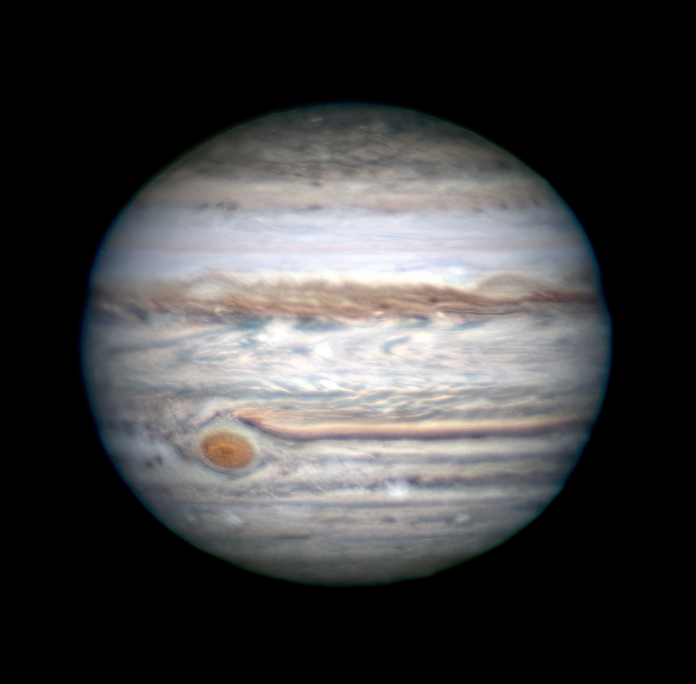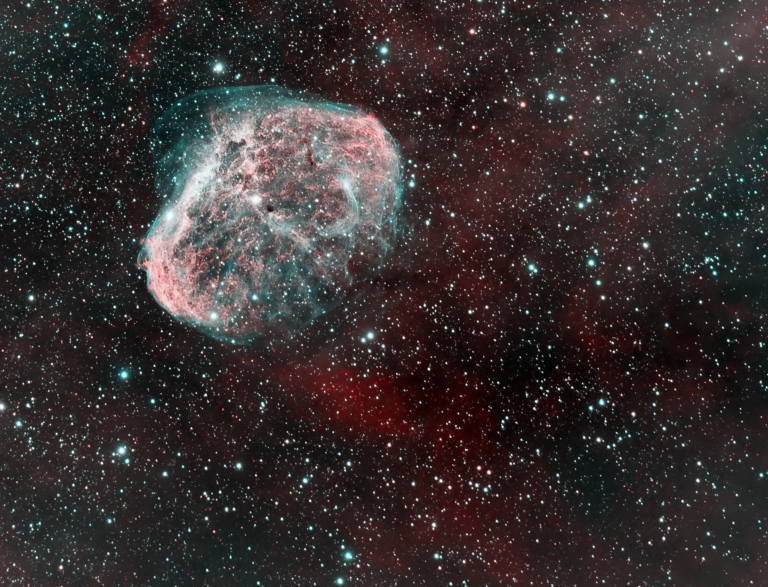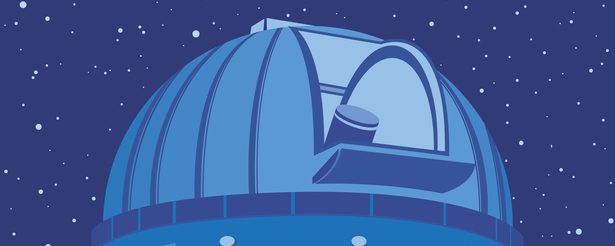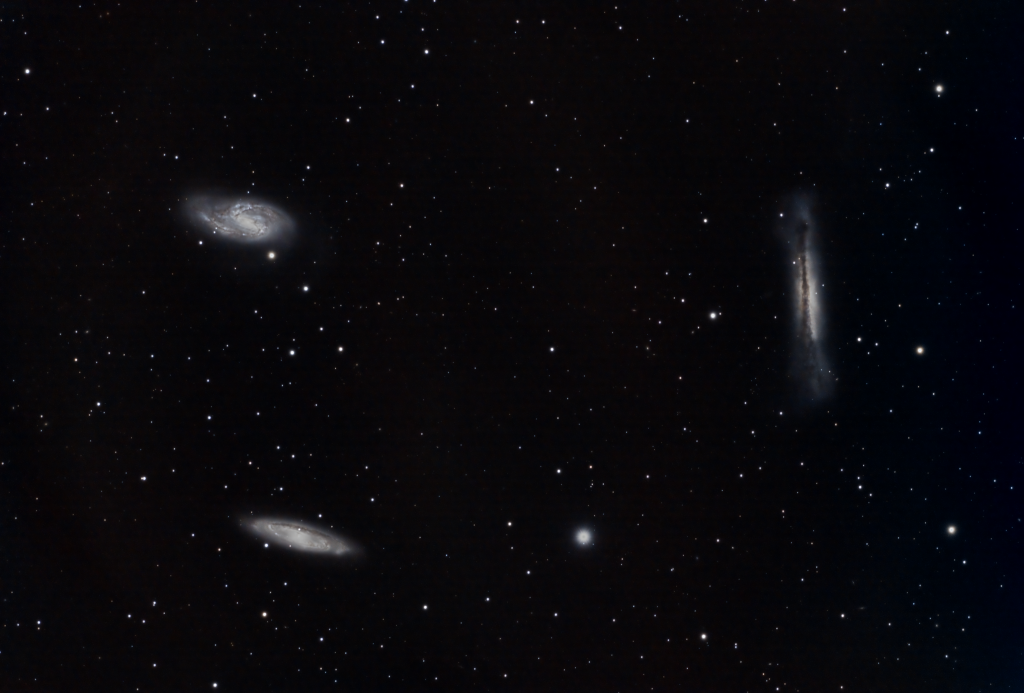
Similar Posts

The Leo Trio of Galaxies
The three galaxies in the constellation Leo (M65, M66, and NGC3628) are about 31 million light-years away. Each one is being seen from a different angle; the one viewed edge-on is also known as the “Hamburger Galaxy”. Each has been interacting with each other, and distorting the shapes of these galaxies through the complex dance…

Dusting Off the Planetary Gear
It’s been awhile since I attempted Jupiter and Saturn… years, in fact. But last night was too good to pass up. Jupiter is just past its opposition, and it’s one of its closest approaches to Earth ever. There wasn’t a lot of turbulence in the air late last night, the Great Red Spot was out,…

Off to See the Wizard (again)
These past couple of nights, I revisited the Wizard Nebula – home of a star cluster about 7,000 light-years away within the constellation Cepheus. This is a false-color image in the “Hubble Palette” where red, green, and blue represent ionized Sulphur, Hydrogen, and Oxygen emissions respectively. Can you see the “wizard”? Hint: he’s lying on…

Playing with Pac-Man
This is NGC281, or the “Pac-Man” nebula. I think it’s one of those objects that might look a little like its name if you’re viewing it through a big telescope in a dark sky, but takes on a totally different character in long-exposure, narrowband images such as this. This is a total of 13 hours…

Revisiting the Crescent Nebula
I’ve imaged this one before, but for whatever reason I picked up way more detail on it last night. Part of it’s a better camera and better tracking on the telescope mount, but I think conditions may have just been really awesome last night. It’s not normal to have this many good nights for astrophotography…

The Sun is Looking Angry Today
That massive sunspot group rivals the size of the one that triggered the Carrington Event in 1859. So far it has kicked off some large coronal mass ejections heading our way, but fortunately nothing on that scale. Let’s hope we just get some pretty auroras from this, and nothing more damaging!

